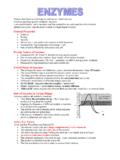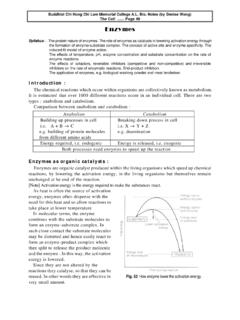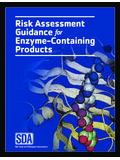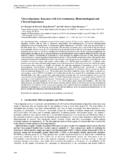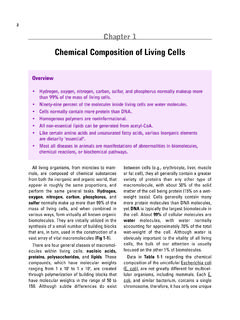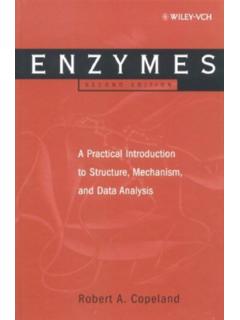Transcription of Sigma Product Information Sheet TRITON X-100™ …
1 Sigma Product Information Sheet TRITON X-100 Sigma Product NUMBER: X-100 (Laboratory Grade) (Note: TRITON X-100 is supplied by Sigma chemical ) CAS NUMBER: 9002-93-1 NAMES: X-100; TRITON X-100; octylphenol ethylene oxide condensate; Octoxynol-9; t-octylphenoxypolyethoxyethanol. TRITON X-100 was a registered trademark formerly owned by Rohm and Haas Co., but now owned by Union Carbide. GENERAL Information : X-100 is a nonionic detergent, 100% active ingredient, which is often used in bio- chemical applications to solubilize proteins. TRITON X-100 has no antimicrobial properties. It is considered a comparatively mild detergent, non-denaturing, and is reported in numerous references as a routinely added reagent. It does absorb in the ultraviolet region of the spectrum, however, so can interfere with protein quantitation.
2 A number of polymeric resins have been used to remove X-100 from solution, including Amberlite hydrophobic XAD resins and Rezorian A161 cartridges. The "X" series of TRITON detergents are produced from octylphenol polymerized with ethylene oxide. The number ("-100") relates only indirectly to the number of ethylene oxide units in the structure. X-100 has an "average of " ethylene oxide units per molecule, with an average molecular weight of 625. In addition, lower and higher mole adducts will be present in lesser amounts, varying slightly within supplier's standard manufacturing conditions. No antioxidants are added by Sigma or the manufacturer, but commercial preparations of TRITON X-100 have been found to contain peroxides up to hydrogen peroxide (H2O2) equivalents.
3 These impurities may interfere with biological reactions. Sigma offers X-100-PC and X-100R-PC as biological grade alternatives. STRUCTURE: N = approx. TRITON X-100tm has a structure very similar to those of Igepal CA-630 [ Sigma I3021] and of Nonidet P-40 (no longer commercially available), and the names are sometimes reported as synonyms. However, TRITON X-100 is slightly more hydrophilic than Igepal CA-630; these two detergents are NOT considered to be functionally interchangeable in most applications. PHYSICAL PROPERTIES: TRITON X-100tm is a very stable material, assumed to be stable for years if stored sealed. It is a clear to slightly hazy, colorless to light yellow liquid (color by APHA = 100). 1. Specific gravity: at 25 C (Approx.)
4 G/mL) 2. Approximate molecular weight = 625, giving effective molarity = M for the neat liquid. 3. UV absorption: lambda max = 275 nm and 283 nm in methanol 4. Viscosity (Brookfield): 240 cps at 25 C 5. pH (5% aqueous solution): to 6. Critical micelle concentration (CMC): to mM SOLUBILITY / STABILITY: TRITON X-100 is soluble in all proportions at 25 C in water, benzene, toluene, xylene, trichloroethylene, ethylene glycol, ethyl ether, ethanol, isopropanol, and ethylene di-chloride. Sigma assays dissolves 1 mL X-100 in 10 mL water to give a clear to slightly hazy solution, from clear to slightly yellow in appearance. Solutions are stable to auto-claving. At certain concentrations the solutions may be cloudy but dispersible above the cloud point; they should clear with stirring upon cooling.
5 However, any ethylene oxide polymer can form trace peroxides on exposure to oxygen. These impurities may interfere with biological reactions. Sigma offers X-100-PC and X-100R-PC as biological grade alternatives. SPECIFIC USAGE NOTES: For lysing cells, typically about X-100 solution in water will be sufficient, and even up to concentrations will usually not harm most enzymes being isolated. Many enzymes remain active in the presence of X-100; for example, a commonly used pro-tease, Proteinase K, remains active in 1% (w/w) solutions of X-100.
